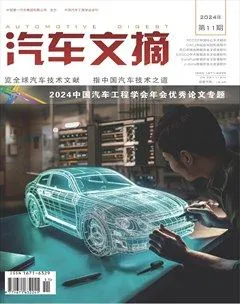无遮阳帘天幕的应用问题及对策研究(英文)

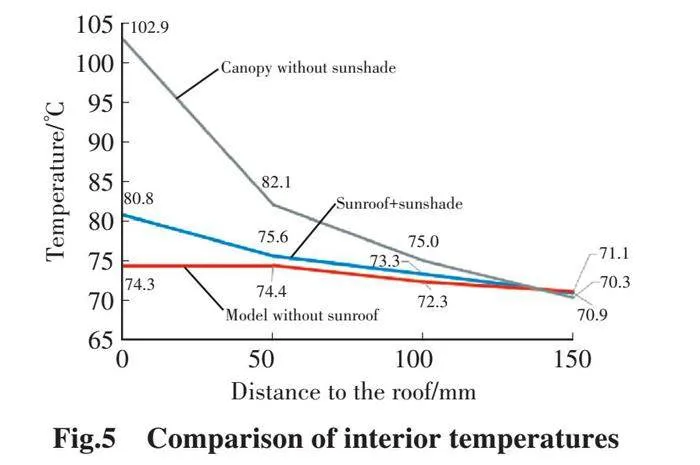
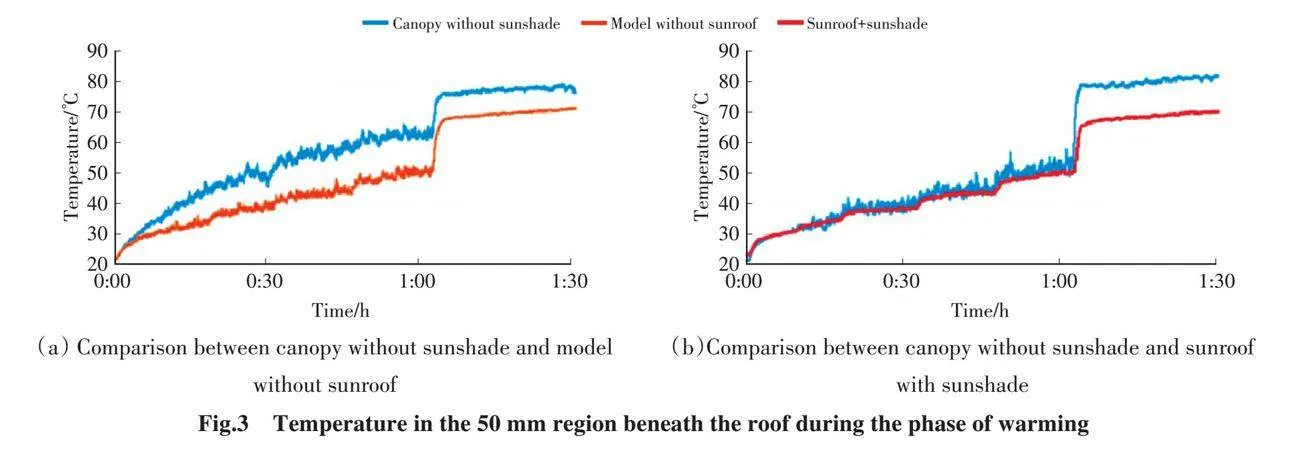
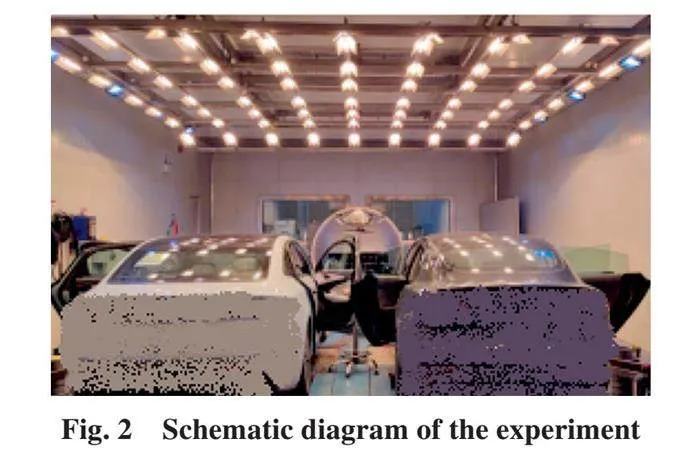
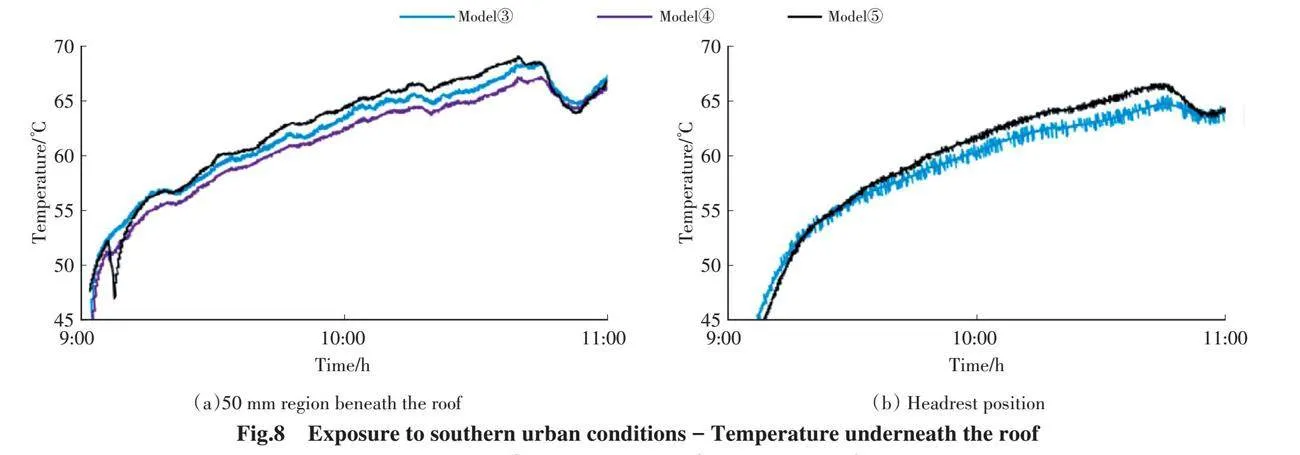
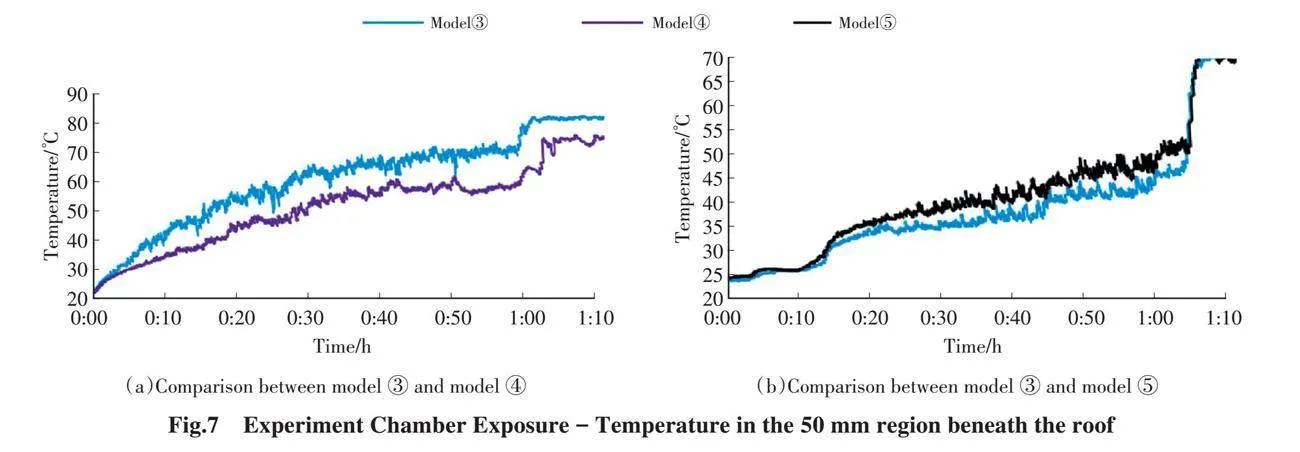
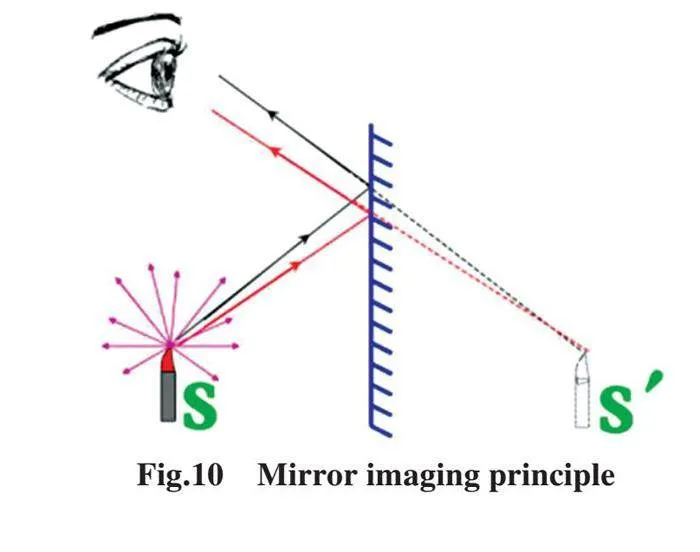
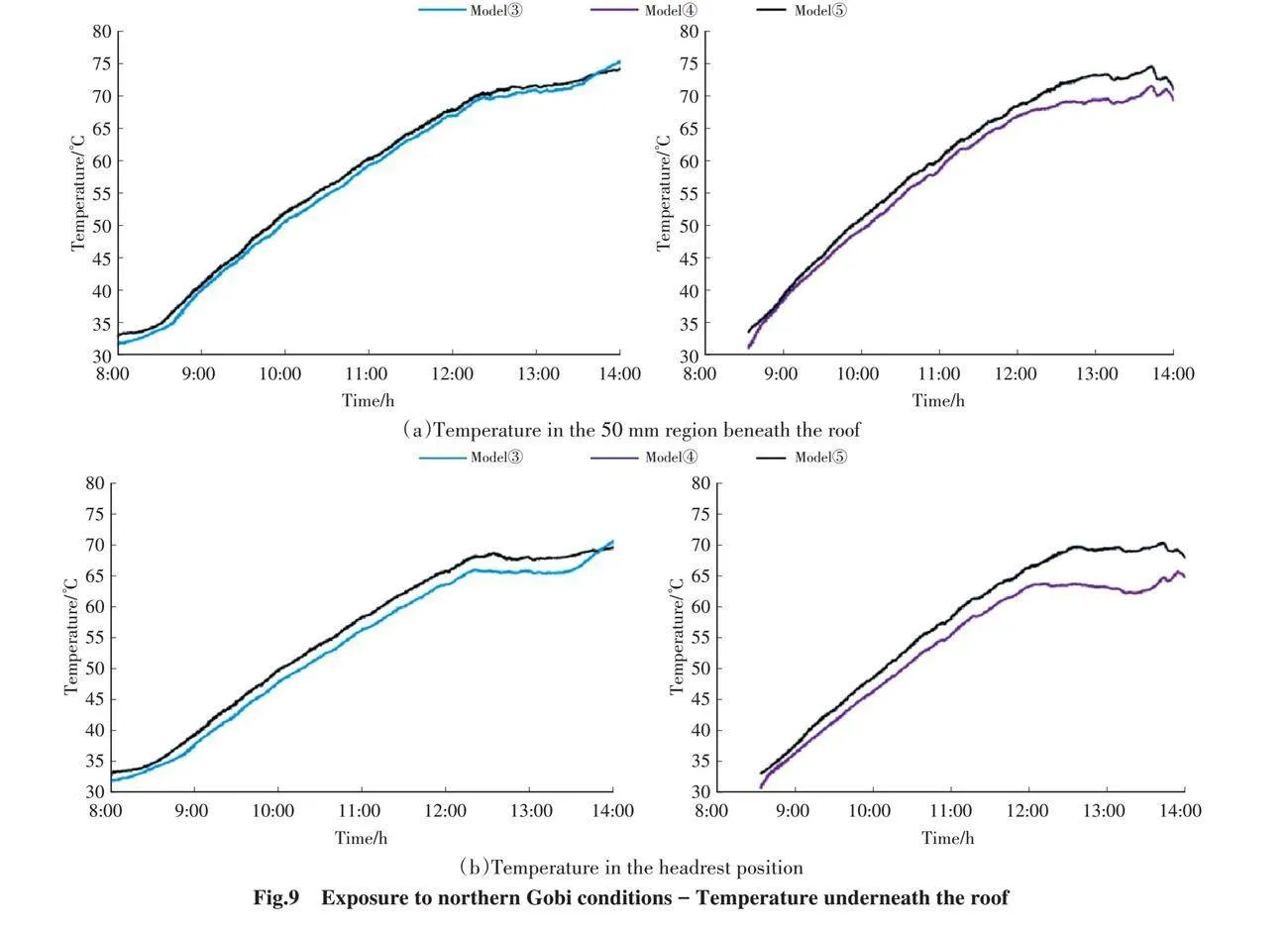

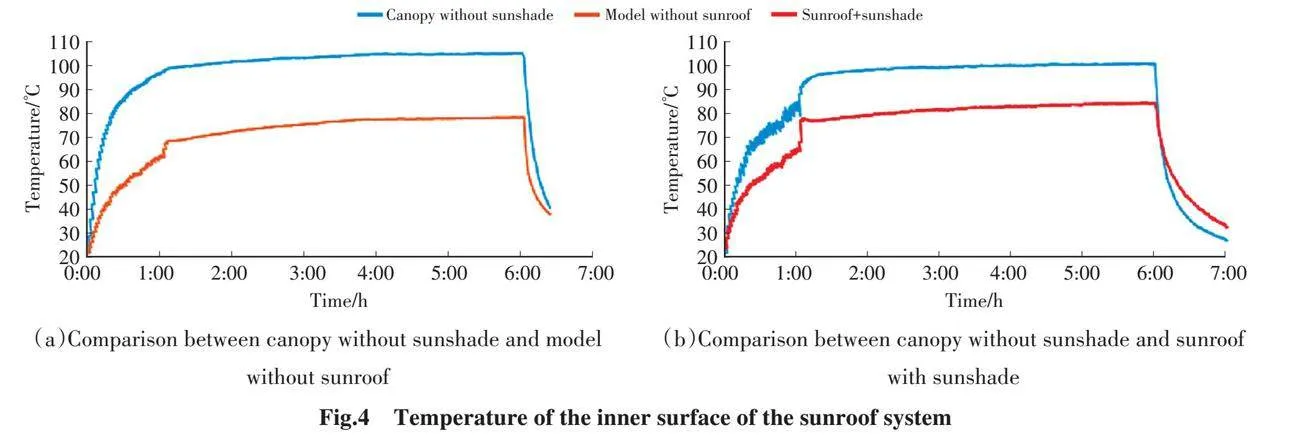
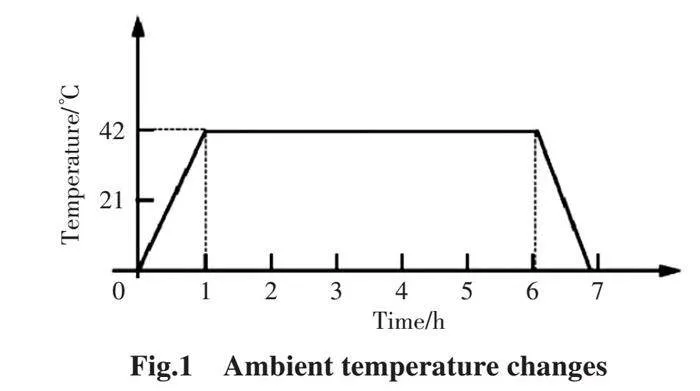
Analysis on the Application and Improvement of Canopy without Sunshade Curtain
Yi Bengang, Wang Kai, Tian Hongsheng, Ye Zihan, Qing Minghao, Zhao Mingguo, Qiu Shoufa, Wang Dan
(BYD Automobile Industry Company Limited, Shenzhen518118)
【Abstract】 Nowadays, in order to expand the roof view to bring passengers closer to nature, more and morenew energy vehicles are opting for canopy designs without sunshades. However, after removing traditional sunshades, new solutions must be sought to address issues such as heat insulation, glaring sunlight, and interior reflections from the roof glass during the summer months. This paper conducts an in-depth analysis of the technical advantages and shortcomings of sunshade-free canopy in terms of heat insulation and interior reflections during summer, from both theoretical analysis and experimental comparison perspectives, and proposes improvement strategies. The research results indicate that although the panoramic roof enhances the vehicle's interior view and technological appeal, it still has shortcomings in terms of heat insulation and the problem of interior reflections caused by direct sunlight. The proposed improvement strategies can effectively mitigate these issues. and offers consumers a more comfortable and intelligent driving experience.
Key words: Canopy, Heat-insulated glass, Dimmable glass, In-vehicle reflection
【欢迎引用】 衣本钢, 王凯, 田洪生, 等. 无遮阳帘天幕的应用问题及对策研究[J]. 汽车文摘,2024(XX): X-XX.
【Cite this paper】 YI B G, WANG K, TIAN H S. et al. Analysis on the Application and Improvement of Canopy without Sunshade Curtain[J]. Automotive Digest (Chinese), 2024(XX): X-XX.
【摘要】目前,为了拓宽车顶视野,让乘客更贴近自然越来越多的新能源车型选择采用无遮阳帘的全景天幕方案。这种设计去除了传统遮阳帘,并寻求新的解决方案来应对天幕玻璃在夏季的隔热、刺眼阳光以及车内倒影等问题。从理论分析和试验对比,深入研究了无遮阳帘天幕在夏季隔热和车内倒影方面的技术优势和缺陷,并提出改善策略。研究结果表明,虽然全景天幕提升了车内的视野和科技感,但在隔热和阳光直射引发的车内倒影问题上仍存在缺陷,提出的改善策略可有效缓解这些问题,为消费者带来更舒适、智能的驾乘体验。
关键词:天幕;隔热玻璃;调光玻璃;车内反射
中图分类号:U465 文献标志码:A DOI: 10.19822/j.cnki.1671-6329.20240212
0 Introduction
In recent years, the domestic and foreign new energy vehicle industry has experienced rapid growth. China’s market share for new energy vehicles has surged, increasing from 13.4% in 2022 to 21.6% in the first half of 2023. Concurrently, the major new energy vehicle enterprises are dedicated to enhancing the technological sophistication and driving comfort of their vehicles.
The sunroof system, which provides a view from the roof of the car, is a distinctive feature that differentiates the grade of the vehiclemodels and is therefore a focal point for manufacturers of new energy vehicles[1]. The arrangement of battery packs in these models often results in reduced headroom, making it essential for the sunroof system to maximize the field of view while minimizing the headroom it occupies. Consequently, an increasing number of vehicle models are opting to configure the panoramic sunroofs to enhance the roof view and eliminate the sunshade, thereby conserving headroom[2-3].However, in the absence of a sunshade canopy, the primary concern is the heat insulation and sunshade of the canopy glass. Conventional heat insulation and sunshade solutions may lead to in-vehicle reflections, which can adversely affect the passenger experience. This paper discusses the selection and performance of sunshade-free canopies from two perspectives: theoretical analysis and experimental comparison.
1 Research on the Heat Insulation Problem of Sunshade-free Canopy
The most significant consequence of removing the sunshade is a reduction in the thermal insulation of the car’s roof. Numerous complaints regarding the heat insulation of sunshade-free panoramic sunroof models without a sunshade have emerged in the market. The primary issue reported by vehicle owners is a noticeable burning sensation near the head, particularly in the rear seating area. The primary reasons for passengers experiencing this discomfort include [4-7]:
(1) The insulation level of canopy glass is inferior to that of roofs without sunroofs and sunroofs with sunshades, resulting in a greater influx of heat into the vehicle.
(2) The thermal conductivity and specific heat capacity of the heat-insulated glass are greater than those of the roof and sunshade curtains. Consequently, the temperature of the inner surface of the canopy without a sunshade will be significantly higher than that of the roof and sunshade. Furthermore, the heat-insulated glass will reach a higher temperature than the ordinary glass after exposure to sunlight, which will exacerbate the issue of heat insulation in the panoramic canopy.
(3) Due to the relatively low density of hot air, the hot air inside the car will accumulate near the roof, causing passengers feel as though they are being roasted.
The positioning of the rear air conditioning vents at a lower level relative to the front, coupled with the slinky shape of the new energy sedan, will result in the roof being brought closer to the rear heads. This will have the effect of making the rear passengers feel hotter in the head area.The following is a comparison of the heat insulation performance of a sunshade-free canopy, a roof without a sunroof, and a model featuring both a sunroof and a sunshade, based on high-temperature sun exposure experiments. Subsequently, the heat insulation levels of the sunroof glass across various insulation solutions are analyzed.
1.1 Comparison of Heat-insulation Levels of Different Roofs
The experiment object is to compare the insulation effect in high temperature environment ofdifferent car roofs. There experiment models are compared, which are “no sunroof model”, “sunroof + sunshade model” and “no sunshade canopy model (Low-E glass; Transmittance of Light (TL)=6%; Total Solar Transmittance (TTS) =20%)”.
The experiment was conducted using infrared light to simulate daylight. The irradiation intensity was 1 200 W/m², and the air humidity was 30%. The ambient cabin temperature varied, as illustrated in Fig.1. In the area where the entire vehicle was subjected to intense sunlight irradiation, the cabin ambient temperature reached 42 ℃, which corresponds to an outdoor ambient temperature of approximately 50 ℃.
The test vehicles were placed together in the high-temperature test chamber and divided into 2 groups for testing. The first group compared the air temperature inside the vehicle near the sunroof system of the sunroof model without a sunshade and a sunroof model without a sunroof. The second group compared the temperature inside the vehicle of the sunroof model without a sunroof and a sunroof model with a sunroof. Both sets of tests were conducted in the same environmental chamber, with the temperature settings maintained to ensure the uniqueness of the variables.
The temperature collection areas are as follows: the inner surface of the sunroof system, the 50 mm area under the roof,RUGyvmzBRShzrgLizrSm8HwdkP4VdQdtLzRNvKVDtf4= the 100 mm area under the roof, and the headrest position.
(1) During the initial phase of heating, the interior temperature of the sunshade-freecanopy model rises at a faster rate than that of the roofless model and the sunroof sunshade configuration. In the 50 mm area below the roof (overhead position), the temperature of the sunshade-freecanopy model is on average 6.5 ℃ higher than that of the model without sunroof, and approximately 0.5 ℃ higher than that of the sunroof with sunshade model (as shown in Fig.3).
According to the heat calculation formula[8]
Q = c·m·∆t (1)
In the formula:Q refers to the heat absorbed by the object; c refers tothe specific heat capacity of the object; m refers to the mass of the object; ∆t refers to the amount of change in temperature of the object.
It can be seen that the surface temperature of the object is the performance after absorbing the heat. Under the conditions of this experiment, various points of the temperature of the car during the heat preservation stage tends to be stable. It can be observed that the temperature inside and outside the car remains relatively stable through the roof, with minimal heat exchange. During the warming stage, the temperature inside the car rises rapidly, indicating that a considerable amount of heat is entering the car through the roof. Therefore, in order to assess the heat insulation performance of each car model, it is necessary to compare the internal temperature of the car with the heat entering the roof of each model. Consequently, in the heating stage, the interior temperature can be used to infer the amount of heat entering the car through the roof, thus enabling the heat insulation performance of the roof of each car model to be evaluated. Furthermore, due to the differing thermal conductivity of different roofs, the temperature on the surface of each roof is also distinct. Consequently, the comparison of the interior temperature at a depth of 50 mm below the roof can provide an accurate reflection of the thermal insulation performance of the roof.
In summary, the thermal insulation performance of each roof is ranked as follows: roof without a sunroof > sunroof with a sunshade ≈ sunshade canopy without a sunshade.
(2) The experimental results shown in Fig.4 indicate that the temperature of the inner surface of the Low-E glass is higher than that of the inner surface of the roof of the model without a sunroof, by approximately 27.5 ℃, and higher than that of the inner surface of the roof of the model with a sunroof and sunshade, by approximately 19 ℃.
The temperature of the inner surface of the sunshade-less sunroof in the experiment reached a maximum of 103 ℃, while the inner surface temperature of the canopy exceeded 80 ℃, even when exposed to normal outdoor sunlight at temperatures ranging from 33~36 ℃ for 3 h. It is noteworthy that blister formation on the skin occurs when the external temperature reaches 50 ℃, while the formation of scars on the skin occurs when the external temperature reaches 90~100 ℃. Consequently, it can be concluded that in the design of the model, it is of paramount importance to ensure sufficient headroom in order to avoid passengers being scalded by the canopy glass.
(3) As shown in Fig.5, during the heat preservation stage, the farther away from the roof, the smaller the temperature difference between the sunshade-free canopy model, the sunroof-free model and the sunroof + sunshade model. In the area of 100 mm below the roof, the temperature of the sunshade-free canopy model is higher than that of the sunroof-free model and the sunroof+sunshade model by 2.7 ℃ and 1.7 ℃, respectively. Furthermore, the temperature of the sunshade-free canopy model is even lower than that of the sunroof + sunshade model in the headrest area by approximately 1 ℃. Furthermore, the temperature in the 50 mm and 100 mm areas below the sunshade-free canopy model is comparable to the temperature in the inner surface of the roof and the 50 mm area below the roof, respectively, with the sunroof+sunshade curtain.
A comparative analysis of the test data reveals that although there is a notable discrepancy between the heat insulation level of the sunshade-free canopy with that of the models without sunroof, it is comparable to that of the sunroof with sunshade. However, the inner surface temperature of the canopy glass is evidently higher than that of the sunroof+sunshade curtain. Furthermore, the heat radiation effect of the glass is more pronounced when the distance between the human head and the canopy glass is closer. In order to reduce the heat radiation of the roof, it is necessary to ensure that the distance between the head and the glass is at least 50 mm greater than that of sunroofs with sunshade curtains. The temperature of the glass can be uncomfortable for passengers, particularly when the sunroof glass is arranged without a sunshade curtain. In order to ensure the roof’s heat insulation effect, it is necessary to set aside at least 50 mm more headspace than sunroofs with sunshade curtains models when arranging the man-machine position of the sunroof glass models without sunshade curtains.
In order to consider passenger comfort, it is recommended that sunshade-like canopy models leave at least 50 mm more headroom than sunroof sunshade models in order to achieve the same level of heat insulation as sunroof sunshade. Furthermore, an analysis of the sunshade structure shows that canceling the sunshade can only save approximately 63 mm of headroom. Consequently, in the absence of any compromise to the roof’s heat insulation performance, the cancellation of the sunshade can only result in a saving of approximately 13 mm of headroom. Conversely, if the sunshade is cancelled due to insufficient headroom, the level of roof insulation will be affected as shown in Fig.6.
The thermal performance of the panoramic canopy glass cancelling the sunshade and that of no sunroof roof, sunroof with sunshade roof have a certain difference. Besides, the canopy glass using different thermal insulation program will also allow passengers to have a different experience. The following is also from the theoretical and experimental comparison of the differences between the various thermal insulation technology routes.
1.2 Performance Evaluation of Canopy Insulation
The key parameter for evaluating the level of glass insulation is the total solar transmittance ratio. This is defined as the sum of the transmittance of direct sunlight through the glass and the secondary heat transfer coefficient of solar radiation absorbed by the glass assembly to the interior.
The total solar transmittance ratio is calculated using the following formula [9].
g = τe +qi (2)
In the formula: g is thetotal solar transmittance of the specimen; τe is the direct solar transmittance ratio of the specimen;qi is the coefficient of secondary heat transfer from the specimen to the room side.
The formula of the direct solar transmittance ratio of the specimen τe:
[τe=λ=300 nm25 000 nmτλSλ∙△λλ=300 nm25 000 nm Sλ∙△λ] (3)
In the formula:[λ] is the wave length; [τλ] is the spectral transmittance ratio of the specimen; [ Sλ]is the relative spectral distribution of solar radiation; [△λ] is the wave length interval; the value [Sλ∙△λ] can refer to GB/T 2680—2021 Table 2.
The secondary heat transfer coefficient qi of the specimen to the interior side is calculated using the following formula:
[qi=αehihe+hi] (4)
In the formula: αe is the direct solar absorption ratio of the specimen; hi is the heat transfer coefficient of the inner surface of the specimen; he is the heat transfer coefficient of the outer surface of the specimen. Take he=23 W/(m2·K) according to the boundary conditions specified in GB/T 2680—2021 5.8.1.
The formula for calculating the direct solar absorption ratio of a specimen:
αe =1 -τe -ρe (5)
where the direct solar reflection ration:
[ρe=λ=300 nm25 000 nmρ0λSλ∙△λλ=300 nm25 000 nm Sλ∙△λ] (6)
In the formula: ρ0[λ] is the spectral reflectance ratio of the outside of the specimen.
The formula for the heat transfer coefficient of the inner surface of the specimen is:
hi =3.6+[4.4εi0.837] (7)
In the formula: [εi] is the corrected emissivity of the inner surface of the specimen.
The aforementioned total solar transmittance formula can be employed in the analysis of the process of sunlight transmission through the canopy glass.
According to equation (5), the solar energy is separated into 3 parts by the canopy glass when the sunlight is directed towards the canopy glass.
The first part of the energy is transmitted directly through the canopy glass, with the ability to directly influence the temperature within the vehicle. This aspect can be calculated by the transmittance rate τe. According to equation (3), τe is the radiation flux ratio of the full-spectrum sunlight (wave lengths of 300 nm ~ 2 500 nm) directly through the canopy glass.
The second part is reflected out by the canopy glass.This part of the energy does not affect the temperature inside the car, which is expressed by the reflectance ρe.
The third part is absorbed by the canopy glass, resulting in an increase in the temperature of the canopy glass itself. According to equation (4), it can be seen that the solar energy absorbed by the canopy glass will simultaneously radiate energy to both the inner and outer sides. The energy radiated only to the interior will affect the temperature of the car.
Therefore, the total solar transmittance is the sum of the energy radiated twice into the car from the sun.
1.3 Comparison of Insulation Levels of Different Canopy Glasses
The current mainstream glass insulation technology in the industry can be divided into 2 distinct routes: dark glass (which reduces visible light transmittance) and coated glass (which increases the reflectivity of infrared light) [10-11]. According to the formula for calculating the total solar transmittance, the aforementioned 2 routes are designed to reduce the total solar transmittance of the canopy glass by decreasing τe (direct solar transmittance) and qi (secondary heat transfer coefficient from the canopy glass to the interior side of the car), respectively.
The preceding analysis indicates that the temperature beneath the roof during the warming process serve asa clear and accurate reflection of the heat insulation performance of the canopy glass. Consequently, this study will focus on evaluating the heat insulation performance of the canopy glass utilizing various heat insulation technologies during the warming stage.
In order to determine the level of thermal insulation provided by the canopy glass, comparative experiments were conducted in both an experimental laboratory and an outdoor setting underdirect sunlight.
(1) Environmental chamber exposure experiment
The experimental conditions and methods are identical to those employed in Section 1.1, with the ambient chamber temperature according to Figure 1, the air humidity at 30%, and the irradiation intensity at 1 200 W/m².
The following experiment vehicles are compared:③ Sunshade-less canopy model (Low-E glass; TL = 6%; TTS= 20%); ④ Sunshade-less dimming canopy model (Low-E glass; TL = 1%; TTS = 19%); ⑤ Sunshade-less dark-colored canopy model (Dark-colored glass; TL = 2%; TTS = 30%).
The temperature of model③ is about 8℃ higher than that of model ④, and the temperature of model ⑤ is about 3 ℃ higher than that of model③.The order of heat insulation performance of the canopy is as follows: model ④ dimming + Low-E canopy>model ③ ordinary Low-E canopy>model ⑤ dark-colored canopy, as shown in Fig.7.
As evidenced by the experimental results, a reduction in the total solar transmittance of the canopy glass is associated with an improvement in thermal insulation performance. This observation further verifies that the total solar transmittance is a key indicator for evaluating the thermal insulation performance of glass.
(2) Outdoor exposure experiment
The 3 vehicles were simultaneously placed outdoors for atmospheric exposure experiments, with the temperatures recorded at various locations inside the cars.
The 3 vehicles are exposed to southern urban conditions (weather temperature 33~36 ℃, sunny) and northern Gobi conditions (weather temperature 30~50 ℃, sunny) respectively.
The following are experiment results as shown in Fig.8 and Fig.9:
(1) In the high-temperature exposure experiment in the urban outdoor and Gobi environments, the heat insulation level of each canopy is consistent with the performance in the laboratory conditions: ④ Dimming + Low-E canopy > ③ Ordinary Low-E canopy > ⑤ Dark-colored canopy.
(2) In the outdoor exposure test under 2 conditions, the farther away the temperature measurement position is from the roof, the greater the temperature difference between the different insulation solutions is.The temperature difference between each similar scheme at 50 mm below the canopy glass was approximately 1 ℃, while at the headrest the temperature difference between each similar scheme reached approximately 2 ℃.It shows that the performance of the insulation effect of the canopy of different insulation solutions needs to be at a certain distance from the roof of the car in order to pull the gap.
(3) The results of the exposure tests indicate that the inner surface of Low-E canopy glass is slightly higher than that of dark glass in terms of temperature. However, in both urban and Gobi environments, the temperature of the inner surface of the 3 types of canopy glass can reach above 80 ℃ after exposure to 3 h. In the absence of open air-conditioning, the canopy is susceptible to burning the skin.
In conclusion, the total solar transmittance of the canopy glass can be used to assess the thermal insulation performance of the glass. Low-E glass offers superior thermal insulation compared to dark-colored glass, and an EC dimming canopy with Low-E glass also exhibits enhanced thermal insulation compared to an ordinary Low-E canopy. Furthermore, regardless of whether the glass is Low-E or dark-colored, the temperature of the glass will increase rapidly following exposure to sunlight. The difference in thermal insulation performance between different glasses can only be discerned in a specific area away from the car’s roof.
2 Reflection Problem of Sunshade-less Canopy
Following the cancellation of the roof sunshade, heat-insulated glass will be utilized to ensure the roof’s heat insulation performance. However, the implementation of heat-insulated glass may lead to certain challenges. For instance, coated glass and dark-colored glass can intensify the reflection issues associated with canopy glass. The reflection of the roof glass will undoubtedly cause inconvenience to car passengers, particularly female passengers. Consequently, the excellent sunshade-free canopy program must also address the reflection problem of the glass.It is evident that reflection is a consequence of glass imaging. When light is emitted by a light source and reflected by a mirror, it is perceived by the human eye as a virtual image of the light source on the back of the mirror.Similarly, light strikes an object inside the vehicle and reaches the surface of the canopy glass after being reflected by the object. The light reflected by the car objects through the canopy glass is then reflected again to the human eye, forming an imaginary image of the object, that is, the reflection, as shown in Fig.10.
The light transmission rate of the canopy glass enables passengers to see the scenery outside through the roof in the vehicle. Consequently, occupants can perceive both the external environment and the vehicle’s own reflection. As the light transmission rate of the canopy increases, the clarity of the external scene perceived by the occupants also increases. Conversely, the relative reflection becomes less noticeable.Furthermore, as the reflectivity of the canopy increases, the vehicle’s reflection becomes more pronounced. In conclusion, the optimal solution to mitigate the issue of roof reflections is to reduce the reflectivity of the canopy glass while simultaneously increasing its light transmission. However, enhancing the light transmittance will inevitably increase the solar energy transmittance of the canopy glass, which will diminish the thermal insulation properties of the canopy. Therefore, a comprehensive consideration of both thermal insulation and reflection issues is required.
By collating and comparing the parameters of the canopies of mainstream 535f37b12864a19e5d8261a7f2d439bedfd574751ccb848daa12745a4e8819eemodels currently available on the market, and subjectively evaluating them from the passenger’s perspective (as listed in Table 1), it can be concluded that when the canopy’s transmittance exceeds its reflectance, the canopy’s reflection is deemed acceptable. Conversely, when the transmittance is lower than its reflectance, the canopy’s reflection becomes highly noticeable.
Consequently, as long as the light transmission of the canopy glass is greater than its reflectivity, the problem of reflection from the canopy glass can be effectively mitigated.
3 Conclusion
This paper presents a theoretical analysis and experimental comparison of 2 dimensions: the heat insulation and car reflection of a no sunshade curtain canopy glass. It is acknowledged thata sunshade-free canopy is unlikely to achieve the same level of heat insulation as models equipped with a sunroof. However,the heat insulation level of a sunroof with a sunshade curtain can be closely approximate. Furthermore,by implementing a well-designed human-machine interface, the impact of high temperatures from the canopy glass on passengers can be effectively mitigated. In terms of glass thermal insulation performance, Low-E glass thermal insulation performance is superior to dark glass. Low-E glass exhibits a higher light transmittance than dark glass, yet it can also achieve a lower total solar energy transmittance. Additionally, experimental data has been obtained to verify that that total solar energy transmittance is a key parameter characterizing the thermal insulation level of the glass. In addition, the combination of dimming technology and heat-insulating glass can be employed to address both the issue of heat insulation and the need for good shading, effectively resolving the problem of sun glare. In order to address the issue of car reflection, the design of the canopy glass transmittance must be greater than its reflectivity. This approach will help control roof reflection within an acceptable range for most individuals. However, it is essential to give priority to ensure that the roof of the premise of the thermal insulation effect, and optimize the phenomenon of the roof reflection.
In summary, while there is a higher prevalence of complaints about the sunshade-free canopy in the current market, these issues can be effectively mitigated through the implementation of reasonable human-machine arrangements and the utilization of innovative glass technology. This approach allows passengers to enjoy the expansive views offered by the panoramic canopy without being exposed to the sun’s intense glare or concerns about privacy within the vehicle.
References
[1] JIA Y H. Discussion on development trend of automative glass [J]. Glass, 2010, 4(1): 36-38.
[2] WANG M, LI H. Research on new automobile panoramic canopy glass technology [J]. Glass Science and Technology, 2021, 30(4): 58-64.
[3] LIU T, XU X Y. Development trend and market prospect analysis of automotive panoramic canopy [J]. Automotive Industry Research, 2020(8): 34-38.
[4] GANS Y, ZHAO T, CHEN D P, et al. Review on the research of vehicle windshield heat insulation films [J]. Journal of Automotive Safety and Energy, 2013(4): 48-53.
[5] CHEN L, ZHAO Y. Study on privacy protection and heat insulation performance of automobile panoramic canopy [J]. Automobile Parts, 2023 (1): 62-66.
[6] HUANG M, WANG G. Research on thermal insulation effect of automobile panoramic canopy based on multi-factor analysis [J]. Journal of Automotive Safety and Energy, 2020, 11(4): 470-477.
[7] ZHANG L, CHEN X. Evaluation and improvement strategy of thermal insulation performance of automotive panoramic sunroof [J]. Automobile Technology & Material, 2021(10): 34-39.
[8] ZHANG W, LIU X D. Research on the design and optimization of automobile panoramic canopy [J]. Chinese Journal of Automotive Engineering, 2022, 12(3): 19-26.
[9] JIANG X C. Recent development of Low-E glass [J]. Vacuum, 2003(2): 1-6.
[10] TANG D, WANG W F, SHEN L T. Exploring the production process and film properties of coated glass [J]. Development Guide to Building Materials, 2018, 16(18): 1.
[11] YU Z L, ZHAO X Z, WANG H Q. Research and application of thermal insulation coating technology on glass surface [J]. Building Energy Efficiency, 2012(8): 4.
(责任编辑 明慧)

